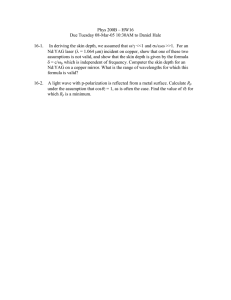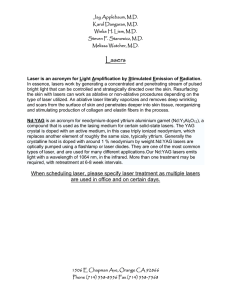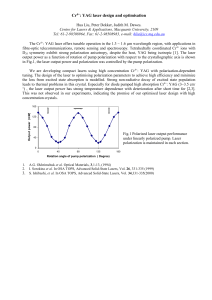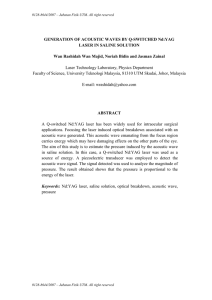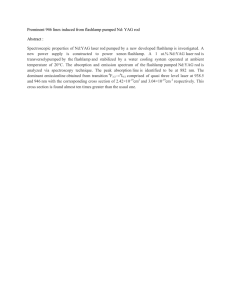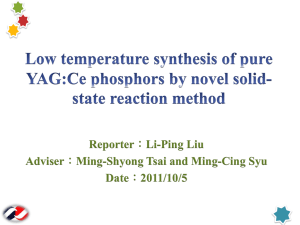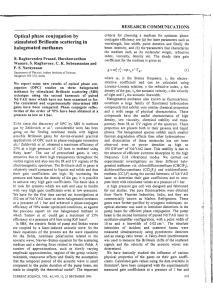Emission spectroscopic studies of laser
advertisement
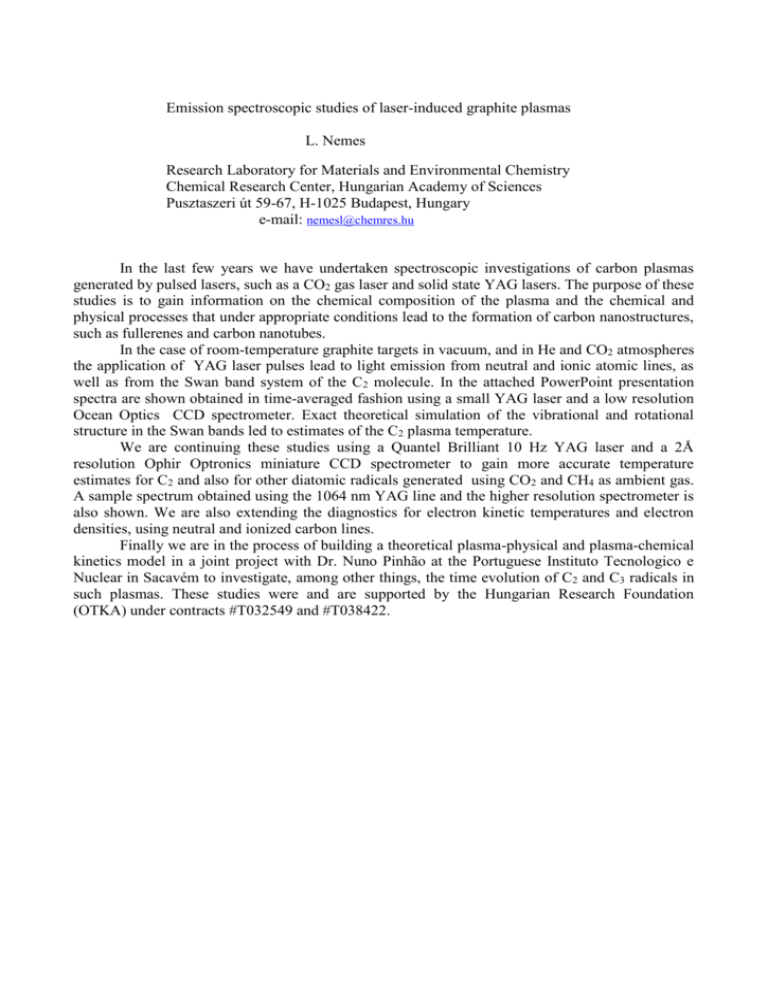
Emission spectroscopic studies of laser-induced graphite plasmas L. Nemes Research Laboratory for Materials and Environmental Chemistry Chemical Research Center, Hungarian Academy of Sciences Pusztaszeri út 59-67, H-1025 Budapest, Hungary e-mail: nemesl@chemres.hu In the last few years we have undertaken spectroscopic investigations of carbon plasmas generated by pulsed lasers, such as a CO2 gas laser and solid state YAG lasers. The purpose of these studies is to gain information on the chemical composition of the plasma and the chemical and physical processes that under appropriate conditions lead to the formation of carbon nanostructures, such as fullerenes and carbon nanotubes. In the case of room-temperature graphite targets in vacuum, and in He and CO2 atmospheres the application of YAG laser pulses lead to light emission from neutral and ionic atomic lines, as well as from the Swan band system of the C2 molecule. In the attached PowerPoint presentation spectra are shown obtained in time-averaged fashion using a small YAG laser and a low resolution Ocean Optics CCD spectrometer. Exact theoretical simulation of the vibrational and rotational structure in the Swan bands led to estimates of the C2 plasma temperature. We are continuing these studies using a Quantel Brilliant 10 Hz YAG laser and a 2Å resolution Ophir Optronics miniature CCD spectrometer to gain more accurate temperature estimates for C2 and also for other diatomic radicals generated using CO2 and CH4 as ambient gas. A sample spectrum obtained using the 1064 nm YAG line and the higher resolution spectrometer is also shown. We are also extending the diagnostics for electron kinetic temperatures and electron densities, using neutral and ionized carbon lines. Finally we are in the process of building a theoretical plasma-physical and plasma-chemical kinetics model in a joint project with Dr. Nuno Pinhão at the Portuguese Instituto Tecnologico e Nuclear in Sacavém to investigate, among other things, the time evolution of C2 and C3 radicals in such plasmas. These studies were and are supported by the Hungarian Research Foundation (OTKA) under contracts #T032549 and #T038422.
